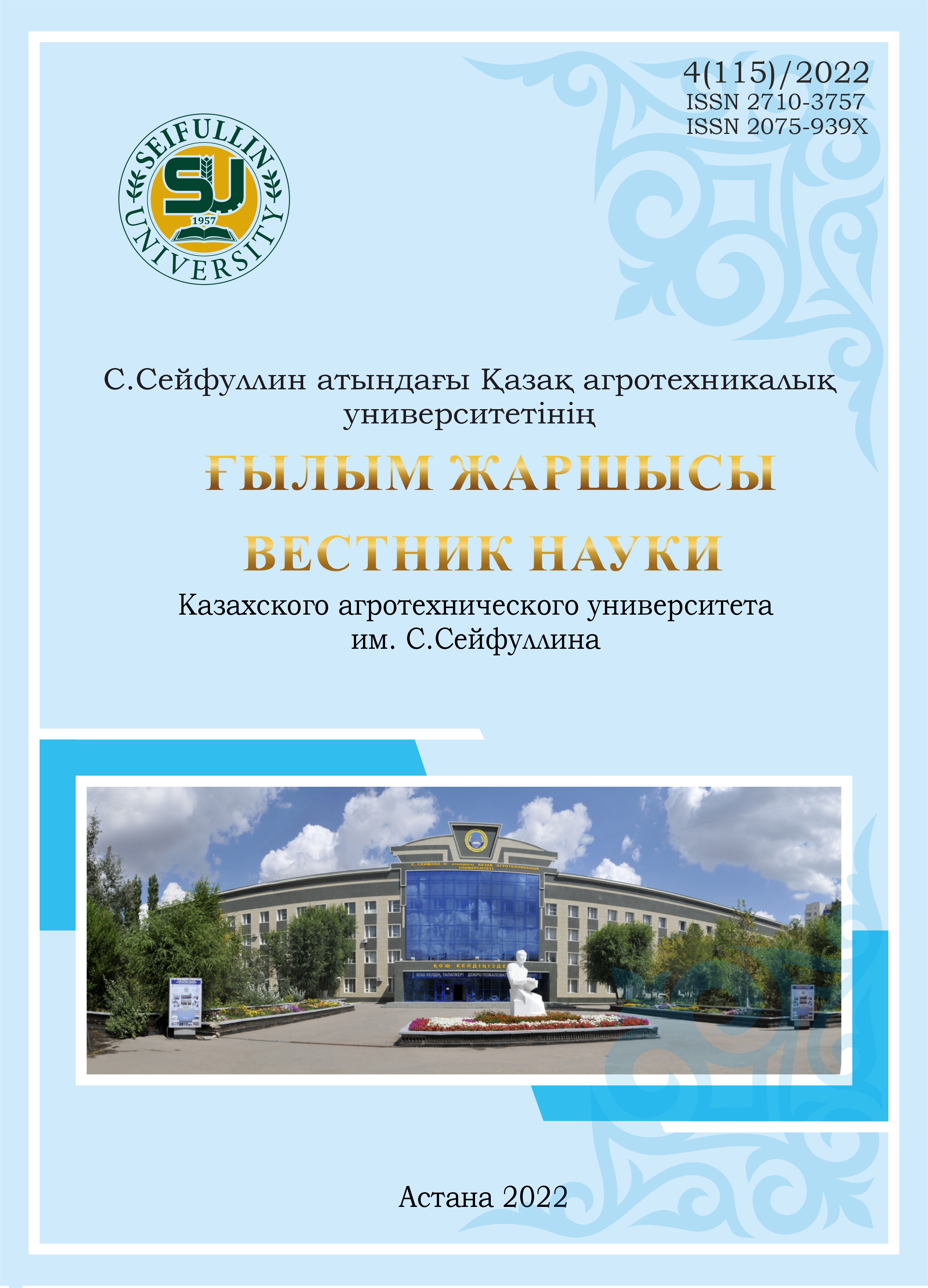THE INFLUENCE OF RESOURCE-SAVING TECHNOLOGIES ON WINTER WHEAT GROWN ON IRRIGATED LANDS OF THE SOUTHEAST OF KAZAKHSTAN
soil processing; direct sowing; minimal processing; productivity; fertilizer.
DOI:
https://doi.org/10.51452/kazatu.2022.4.1261Keywords:
soil processing; direct sowing; minimal processing; productivity; fertilizer.Abstract
Based on the results of the research, the effectiveness of the minimum tillage of winter wheat on irrigated light chestnut soils of the south-east of Kazakhstan was determined. The increase in the yield of winter wheat in all variants of tillage occurred primarily due to an increase in productive tillering and grain content of grain. It has been established that the most effective way of tillage is minimal tillage, that is, it provided an increase in net profit up to 21 thousand tenge. Thus, our studies have shown that a decrease in the intensity of tillage on light chestnut soils under irrigation conditions is quite justified. As the experience of agricultural enterprises in many regions of Kazakhstan shows, the transition to new resource-saving technologies can reduce the cost of grain production by up to 30%. According to the results of many years of research on irrigated light chestnut soils in the southeast of Kazakhstan, it is recommended to use a minimum tillage of 10-12 cm.

